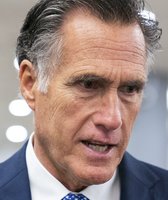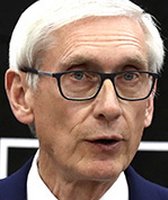Stand up for the facts!
Our only agenda is to publish the truth so you can be an informed participant in democracy.
We need your help.
I would like to contribute
President Donald Trump claims his promised border wall with Mexico will stop drugs from coming into the United States and help solve the nation’s drug epidemic.
More than 64,000 people died in 2016 from drug overdoses, the majority of which were linked to opioids, according to the Centers for Disease Control and Prevention. Trump declared the opioid epidemic a public health emergency Oct. 26 at the White House.
In light of Trump’s declaration, we wanted to revisit his claims about the impact a southern border wall would have on the U.S. drug problem.
Several experts cast doubt on the wall’s potential effect. They noted that much of the illegal drugs coming into the United States arrive through legal ports of entry and that smugglers also use other tools that a wall wouldn’t stop (even catapults). Illicit drugs also flow from the northern border and through the mail from China.
About half of opioid overdose deaths involved a prescription opioid, including oxycodone, hydrocodone and methadone.
Other types of opioids include heroin and fentanyl, a synthetic opioid that is 50 to 100 times more potent than morphine. Fentanyl can be prescribed to treat advanced cancer pain, but illegally made fentanyl is sold on the illegal drug market and is often mixed with or sold as heroin.
CDC estimates that at least 91 Americans die daily from opioid overdose. Trump has long held the view that a border wall would reduce deaths.
Before the election, Trump tweeted, "Heroin overdoses are taking over our children and others in the MIDWEST. Coming in from our southern border. We need strong border & WALL!"
He’s made parallel remarks as president via Twitter and in public appearances.
Trump told law enforcement officials on July 28 that a wall would "have a huge impact on the inflow of drugs coming across" and "that could be one of the main reasons you have to have it."
On Oct. 25, Trump said that in order to make a deal that would benefit immigrants in the country illegally who came to the United States as children, "we have to get something very substantial for it, including the wall ... We have to be able to stop drugs from pouring into our nation."
Several drug trade and policy experts told us a border wall likely would not have the impact Trump envisions.
"Traffickers have a variety of mechanisms at their disposal on how to overcome the wall," said Vanda Felbab-Brown, a senior fellow at the Brookings Institution.
Some of those tricks are outlined in a 2016 Drug Enforcement Administration report. Mexican Transnational Criminal Organizations "remain the greatest criminal drug threat to the United States," and their most common method of smuggling drugs remains vehicles legally coming through U.S. ports of entry. Illegal drugs are smuggled in concealed compartments in passenger vehicles or blended with legitimate goods in tractor trailers, the report said.
Smugglers also attempt to get drugs into the United States using catapults, drones, boats and tunnels. At least 225 tunnels were discovered on U.S. borders from 1990 to March 2016, according to the DEA.
"Traffickers have been very innovative in finding strategies to circumvent existing walls and border control thus far, and more of the same strategy (i.e. more of a wall) doesn't offer much promise as a successful strategy," said Rosalie Pacula, co-director of the RAND Drug Policy Research Center.
Illicit fentanyl, one of the main drivers of overdose deaths in the United States, mainly originates in China and comes in through the southwest border, Canada and U.S. postal service, experts said.
A commission established by an executive order from Trump lamented the ability of immigration officials and mail carriers to detect fentanyl, in part due to the small amount needed for psychoactivity.
"We are miserably losing this fight to prevent fentanyl from entering our country and killing our citizens," the commission reported. "We are losing this fight (predominantly) through China."
Key federal departments should coordinate to intercept illicit synthetic opioids delivered through mail and increase efforts to detect it using enhanced technology, additional manpower and canines, the commission recommended.
"Only a presidential directive will give this issue the top level attention it deserves from (the Justice Department, Department of Homeland Security and USPS)," the July report said.
The commission did not list a border wall in its recommendations for fighting the drug epidemic.
Our Sources
National Institute on Drug Abuse, Overdose Death Rates, last updated September 2017
Washington Post, Trump plans to declare the opioid crisis a public health emergency, Oct. 26, 2017
U.S. Customs and Border Protection, United States Border Patrol, Fiscal Year 2016 apprehensions and seizures statistics
Stat News, ‘The Amazon of drug trafficking’, Dec. 6, 2016
Washington Post, President Trump’s claim that a wall will ‘stop much of the drugs from pouring into this country’, Sept. 11, 2017
FactCheck.org, Will Trump’s Wall Stop Drug Smuggling?, Aug. 30, 2017
Centers for Disease Control and Prevention, Prescription Behavior Surveillance System (PBSS) Issue Brief, July 2017
Centers for Disease Control and Prevention, Understanding the Epidemic, page last updated Aug. 30, 2017
Twitter, @realdonaldtrump: tweet Aug. 27, 2016; tweet April 25, 2017; tweet Feb. 9, 2016; tweet April 24, 2017; tweet April 23, 2017
White House, Remarks by President Trump and President Niinistö of Finland in Joint Press Conference, Aug. 28, 2017
White House, Remarks by President Trump to Law Enforcement Officials on MS-13, July 28, 2017
Brookings Institution, The Wall, The real costs of a barrier between the United States and Mexico, August 2017
Phone interview, Katharine Neill Harris, Fellow in drug policy at the Baker Institute at Rice University, Oct. 25, 2017
Phone interview, Vanda Felbab-Brown, Senior Fellow at Brookings Institution, Oct. 25, 2017
Phone interview, Sanho Tree, Fellow at the Institute for Policy Studies and Director of its Drug Policy Project, Oct. 24, 2017
Email interview, Rosalie Pacula, co-director of the RAND Drug Policy Research Center, Oct. 24, 2017
PolitiFact, Donald Trump largely accurate about drugs catapulted across the U.S.-Mexico border, Sept. 27, 2017
Drug Enforcement Administration, 2016 National Drug Threat Assessment Summary, November 2016
Stat News, ‘Truly terrifying’: Chinese suppliers flood US and Canada with deadly fentanyl, April 5, 2016
White House, President’s Commission on Combating Drug Addiction and the Opioid Crisis, Interim report


 PolitiFact Rating:
PolitiFact Rating: 





































